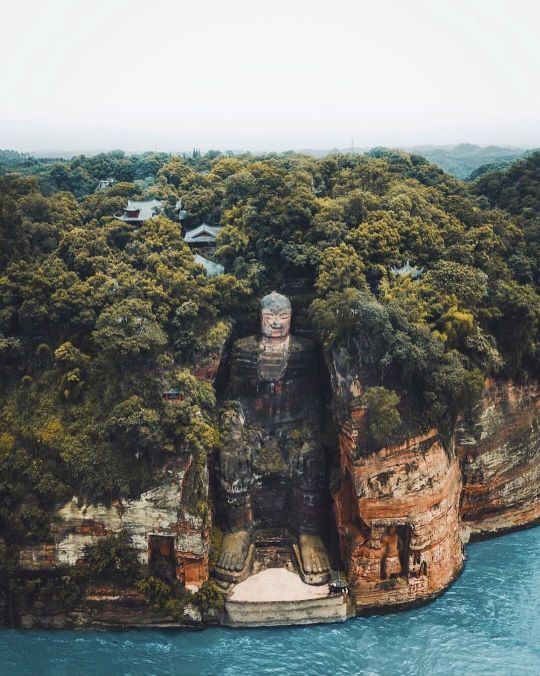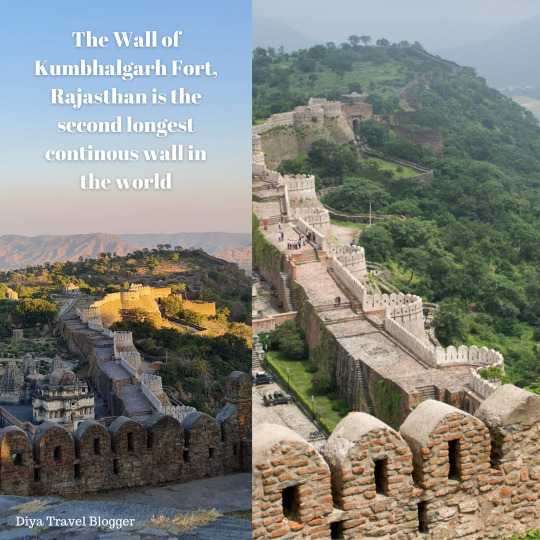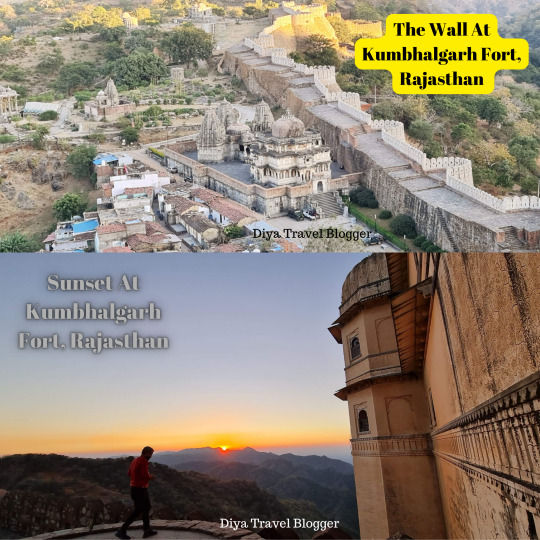#UNESCO sites in China
Explore tagged Tumblr posts
Text
Discover China: Top 10 Fascinating Facts About the Land of the Dragon
Discover China: Top 10 Fascinating Facts About the Land of the Dragon China is a country of immense beauty, rich culture, and groundbreaking innovation. As one of the most visited destinations in the world, it continues to captivate travelers with its ancient history and modern advancements. If you’re curious about this incredible country, here are the top 10 fascinating facts about China that…
#ancient China#Beijing attractions#Buddhist landmarks in China#bullet trains in China#Chengdu panda sanctuary#China high-speed rail#China manufacturing#China’s wildlife#Chinese cuisine#Chinese history#Chinese landmarks#Chinese silk history#Chinese UNESCO sites#food in China#Forbidden City facts#Great Wall of China#interesting cultural facts about China#Leshan Giant Buddha#modern China economy#modern China transportation#pandas in China#population of China#Shenzhen technology hub#Silk Road facts#top attractions in China#traditional Chinese crafts#traditional Chinese dishes#UNESCO sites in China#world’s oldest civilization
1 note
·
View note
Text
Huangshan Mountains, China: Huangshan is a mountain range in southern Anhui province in eastern China. It was originally called "Yishan", and it was renamed because of a legend that Emperor Xuanyuan once made alchemy here. Vegetation on the range is thickest below 1,100 meters, with trees growing up to the treeline at 1,800 meters. The area is well known for its scenery, sunsets, peculiarly-shaped granite peaks, Huangshan pine trees, hot springs, winter snow and views of the clouds from above. Wikipedia
#Huangshan Mountains#Mt. Huangshan#Mount Huangshan#Huangshan#Anhui province#eastern China#china#UNESCO World Heritage Site#Asia
201 notes
·
View notes
Text

Is this a computer chip? It's actually an aerial view of the Forbidden City. 🔲
—
The Forbidden City is the imperial palace complex in the center of the Imperial City in Beijing, China.
It was the residence of 24 Ming and Qing dynasty Emperors, and the center of political power in China for over 500 years from 1420 to 1924.
The palace is now administered by the Palace Museum.
As a UNESCO World Heritage Site, it is one of the most popular tourist attractions in the world.
The Forbidden City is arguably the most famous palace in all of Chinese history and is the largest preserved royal palace complex still standing in the world.
#Forbidden City#computer chip#Beijing#China#Imperial City#Palace Museum#UNESCO World Heritage Site#imperial palace complex#palace#tourist attraction#royal palace#chinese history#ming dynasty#qing dynasty
14 notes
·
View notes
Text

Dazu Rock Carvings: 1350-Year-Old World Heritage Site
Located in the city of Chongqing, the Dazu Rock Carvings are some of the most impressive hand-made structures in China. Spread over 5 different locations in the Dazu District, the carvings tell stories about the various eras of the country. Moreover, the Dazu Rock Carvings represent the stories and figures from major beliefs in China such as Buddhism, Taoism, and Confucianism. Due to their importance for China as they serve as collective memory and the finesse of the handcraft, UNESCO put the carvings on their heritage list in 1999.


hichinatravel


vallys.lee


echanpshan
#dazu rock carvings#unesco world heritage site#carvings#chongqing#hand-made sculptures#china#dazu district#history#buddhism#taoism#confucianism#hichinatravel#vallys.lee#echanpshan#photographer
9 notes
·
View notes
Text
youtube
Exploring the 15 BEST UNESCO World Heritage Sites | geography guru
we're going to take you on a journey to some of the most amazing UNESCO World Heritage Sites in the world. From the Serengeti to the Colesseum, from Easter Island to Borobudur, we're going to take you on an epic journey that will leave you in awe. UNESCO World Heritage Sites are some of the most amazing places on Earth and this video is your chance to explore them all! From the iconic Great Barrier Reef to the impressive architecture of the Colesseum, explore these 15 must-see UNESCO World Heritage Sites!
#best unesco world heritage sites#top 10 unesco world heritage sites#serengeti national park#great wall of china#the 15 best unesco world heritage#yellowstone national park in untied states#the rose city places#machu picchu travel destinations#Best Travel Experiences#Wanderlust Destinations#unesco world heritage sites#World Heritage Wonders#World Heritage Monuments#world heritage sites#amazing UNESCO world heritage sites#geography guru#geography facts#Youtube
0 notes
Text
Xiplomacy: How China helps preserve cultural heritage sites in Asia
via Xinhua, 28 April 2023: The China-led Alliance for Cultural Heritage aims to foster international cooperation in cultural heritage preservation, but the article really highlights China's role in heritage diplomacy - including that of Mruak U in Myanmar
via Xinhua, 28 April 2023: The China-led Alliance for Cultural Heritage aims to foster international cooperation in cultural heritage preservation, but the article really highlights China’s role in heritage diplomacy – including that of Mrauk U in Myanmar. In 2017, a team of scholars and students from the university’s School of Architecture, including Professor Zhou Xiaodi, were invited by…

View On WordPress
0 notes
Text



Mount Fanjingshan
Mount Fanjing, or "Fanjingshan," is part of the Wuling mountain range in southwestern China’s Guizhou province.
Named as a UNESCO World Heritage Site, the mountain is home to a conservation area, a nature reserve, and a number of Buddhist temples—it has been considered a sacred site for centuries.
Perched at the top of the most significant “Red Clouds Golden Peak” is the more incredible Fanjingshan Temple with 2,336 meters above the sea.
Photos by @ youknowcyc
#art#design#stairwell#stairway#architecture#staircase#stairs#staircases#hiking#mount fanjingshan#china#mount fanjing#UNESCO#temple#buddhist#red clouds golden peak#peak
577 notes
·
View notes
Text

The Leshan Giant Buddha, a 71 m tall statue built between 713-803 AD in China.
The massive stone sculpture became listed as a UNESCO World Heritage Site in 1996.
#sculpture#buddha#unesco#travel photography#amazing nature#nature#travel#travel destinations#landscape#landscape photography#beautiful asian nature#china
749 notes
·
View notes
Text








Shuanglin Temple 双林寺 is a 6th century Buddhist temple in Shanxi province, China.
It’s a UNESCO World Heritage site, and is protected by the state administration.
The temple was featured in the 2024 game “Black Myth: Wukong”
#china#chinese architecture#chinese#🇨🇳#chinese heritage#han chinese#Buddhism#chinese buddhism#Buddhist temple#chinese temple#Buddha#sun wukong#black myth wukong#Shanxi#northern qi dynasty#northern qi#journey to the West#jttw#architecture#east asia
126 notes
·
View notes
Photo

Ryoanji
Ryoanji (Ryōan-ji) is a Zen Buddhist temple in Kyoto, Japan which is today most famous for its Zen rock garden with its enigmatic arrangement of stones. Founded in the 15th century CE, the temple is one of the most visited tourist spots in Japan and is listed by UNESCO as a World Heritage Site.
Foundation
The site of Ryoanji, located in the northern hills of Kyoto (Heiankyo) in the district of Ukyo-ku, was converted into a Buddhist temple in 1473 CE. Before that, it was a private estate, created in 1450 CE and owned by the influential Hosokawa family. The gardens were modelled during the ownership of Hosokawa Katsumoto (1430-1473 CE), who retired there, and when the famous general and one of the deputies to the shogun Ashikaga Yoshimasa (r. 1449-1473 CE) died, the buildings were converted for use as a Zen Buddhist temple site.
Zen was introduced to Japan from China in the 12th-13th century CE, and it became especially popular from the mid-15th century CE. Zen thought reduces the significance of studying sacred texts and instead emphasises the importance of contemplation (son) in order to reach enlightenment. Certain things may assist an individual in their process of contemplation and one of these, as we shall see, is the use of minimalist rock gardens.
The Hojo Hall in the complex was once the abbot's residence and its interior is today divided into six rooms by painted sliding screens (fusuma) which include several fine depictions of dragons. There is another building next to the Hojo Hall which is today used as living quarters by the monks of Ryoanji.
Continue reading...
65 notes
·
View notes
Text

Wishing Yixing's original musical drama "Summoning Dunhuang" performance goes well! - Xiao Zhan
GG sent Lay (Zhang Yixing) flowers wishing him success with his musical theater play "Summoning Dunhuang" performed with the National Theatre of China.
The play is about Dunhuang, one of the westernmost ancient cities on the Silk Road, and an important trade, cultural, and Buddhist spiritual site. It is famous for the Mogao caves, a UNESCO World Heritage Site consisting of a series of nearly 500 caves containing art, Buddist relics and trade and spiritual documents spanning a period of 1,000 years, including one of the earliest printed books in history.
The play spans thousands of years through the eyes of various characters and talks about the rise, decline and rediscovery of the region.
37 notes
·
View notes
Text
I Visited The Second Longest Wall In The World
"There’s Magic In Forts"




In the topmost video clip, I can be seen walking at Kumbhalgarh Fort along with my husband while in the bottom most video clip, our wonderful guide can be seen talking to my husband, explaining about the glorious history of this place.
*********************************************
Some very interesting facts about this place:
* The wall at Kumbhalgarh Fort stretches over 36 kilometers, second only to Great Wall of China.
* This Fort was built by Rana Kumbha, a ruler of the Mewar region in the North Western State of Rajasthan, India.
* The wall has never been breached.
* It served as a refuge for the rulers of Mewar.
* There are 360 temples in that area.
* The Fort has seven gates.
* The Fort is surrounded by a Wildlife Sanctuary.
* A spectacular light & sound show is held every evening in the complex depicting the history of the place.
* It is a UNESCO World Heritage Site since 2013.
Source: Times Of India
See you soon, my dear friends 🤗
#incredibleindia#travelblogger#travel destinations#bharat#traveller#destination#travelphotography#travel video#travels#travel blog#travelpics#travel india#travel photo#travelling#travelblog#tourist#tourism#india#outdoor#adventures
107 notes
·
View notes
Text

Fiji Tulou, China
Fujian Tulou are traditional rural dwellings native to the mountainous regions of Fujian Province in southeastern China. These large, circular or rectangular fortified buildings were built by the Hakka people and other communities from the 12th century onwards, primarily to serve as communal homes for multiple generations of a clan or extended family.
Tulou (meaning "earth structure") are designed for defensive purposes, with thick earthen walls made of rammed earth, wood, stone, and other materials, often several feet thick, making them impervious to attack.
The main characteristics of Fujian Tulou are:
1. Circular or rectangular shape
Most tulou are circular, but some are rectangular or square. These shapes create a courtyard in the middle, encouraging communal living.
2. Defensive design
Tulou were built to protect residents from bandits, with only small windows on the upper floors and a single fortified entrance.
3. Large capacity
Some tulou can accommodate hundreds of people and often include living quarters, storage areas and communal halls within the same structure.
4. Self-sustainability
Tulos often contain wells, farming plots and food storage, allowing residents to be self-sufficient during periods of long isolation.
In 2008, several sites of Fujian Tulou were listed as UNESCO World Heritage Sites for their unique architectural forms, cultural significance and historical importance.
They are an impressive example of how communities in ancient China adapted to their environment and fostered a strong sense of community and advocacy.
Image credit to respective owner.
Fujian Tulou are traditional rural dwellings native to the mountainous regions of Fujian Province in southeastern China. These large, circular or rectangular fortified buildings were built by the Hakka people and other communities from the 12th century onwards, primarily to serve as communal homes for multiple generations of a clan or extended family.
Tulou (meaning "earth structure") are designed for defensive purposes, with thick earthen walls made of rammed earth, wood, stone, and other materials, often several feet thick, making them impervious to attack.
The main characteristics of Fujian Tulou are:
1. Circular or rectangular shape
Most tulou are circular, but some are rectangular or square. These shapes create a courtyard in the middle, encouraging communal living.
2. Defensive design
Tulou were built to protect residents from bandits, with only small windows on the upper floors and a single fortified entrance.
3. Large capacity
Some tulou can accommodate hundreds of people and often include living quarters, storage areas and communal halls within the same structure.
4. Self-sustainability
Tulos often contain wells, farming plots and food storage, allowing residents to be self-sufficient during periods of long isolation.
In 2008, several sites of Fujian Tulou were listed as UNESCO World Heritage Sites for their unique architectural forms, cultural significance and historical importance.
They are an impressive example of how communities in ancient China adapted to their environment and fostered a strong sense of community and advocacy.
19 notes
·
View notes
Text

Walking the entire Great Wall of China, which stretches over 13,000 miles (21,196 kilometers), could take approximately 18 months, depending on factors like walking speed, terrain and daily progress.
If someone walked about 30 kilometers (18.6 miles) a day, it could take around 700 days or just under two years, assuming no major interruptions. 🏃
#Great Wall of China#China#walking#Seven Wonders of the World#UNESCO World Heritage Site#military fortification
1 note
·
View note
Text





4th March 1890 saw the opening of the Forth Rail Bridge or to give it the correct title The Forth Bridge.
Before 1890 the only direct route between Queensferry and North Queensferry in the east of Scotland was the ferry across the Firth of Forth. The crossing was slow and often dangerous and the four ferries, Queen Margaret, Robert the Bruce, Mary Queen of Scots and Sir William Wallace, were sometimes prevented from sailing by the weather.
When the railways arrived a ferry further downstream, from Granton to Burntisland, was used to transport goods from Edinburgh to Fife. But a more efficient means of crossing was required and so Thomas Bouch designed a suspension bridge.
Work started on the first pier at Inchgarvie but it was abandoned after another structure by Bouch of a similar design, the Tay Bridge, collapsed in 1879. A new design by John Fowler and Benjamin Baker, incorporating three double cantilevers, was commissioned and work commenced in 1883.
Over the course of the next seven years almost 51,000 Tons of steel was used in the construction of the Forth Bridge (or Forth Rail Bridge as it is often known). On 4 March 1890 the bridge was officially opened by the Prince of Wales (later King Edward VII) who drove in the last of the 6,500,000 rivets. The total cost of the project was £3,200,000 and at least 57 lives.
Three 100m tall towers support the 2.5km structure and the two track railway is carried at a height of 48.2m above the Firth of Forth. With main spans of 521m, the Forth Bridge was, at the time of its construction, the world’s largest cantilever bridge. To this day it still ranks second.
Last year the bridge became the sixth Scottish landmark to be awarded Unesco World Heritage Site status.Scotland's other World Heritage Sites are New Lanark, St Kilda, the Old and New Towns in Edinburgh, Neolithic Orkney and the Antonine Wall.
The award puts it alongside the Pyramids of Egypt, the great Wall of China and the Sydney Opera House in terms of cultural significance.
41 notes
·
View notes
Text

Excerpt from this press release from the Center for Biological Diversity:
The UNESCO World Heritage Committee renewed its call today for urgent action to protect the critically endangered vaquita porpoise in Mexico. With merely six to eight individuals estimated remaining, the vaquita faces imminent extinction from entanglement in illegal fishing gear.
The committee agreed to retain the Islands and Protected Areas of the Gulf of California World Heritage site — the only home to vaquita — on its List of World Heritage in Danger. In its review, the committee determined that Mexico’s recent enforcement actions to quell illegal fishing in the area were “not fully effective” in protecting the vaquita. The committee also approved a suite of corrective measures for Mexico to implement to safeguard the species.
“I appreciate the committee’s continued pressure, but it’s disheartening that Mexico still hasn’t kept its promises to protect the quickly vanishing vaquita,” said Alejandro Olivera, senior scientist and Mexico representative at the Center for Biological Diversity, who is attending the committee meeting in Delhi. “Despite a 2020 ban, lethal gillnets still plague these little porpoises’ habitat. Mexico needs to step up immediately, expand the vaquita’s protected area, and enforce the law by stopping illegal fishing.”
Under the World Heritage Convention, a site may be listed as “in danger” if development projects or major public works threaten the natural values the site was designated to protect. According to UNESCO, the aim of the list is to “inform the international community” of the situation and “encourage corrective action.”
The vaquita population has declined drastically, falling from nearly 600 in 1997 to fewer than 10 in 2024 because of entanglement in gillnets used for illegal fishing. These nets target shrimp and a variety of fish, including totoaba, an endangered species whose swim bladder is coveted in China. Despite some reduction in illegal fishing within a no-fishing zone known as the zero tolerance area, the practice remains widespread outside this zone, posing a continuous threat to the vaquita’s survival.
The committee decided that for the “in danger” designation to be lifted, Mexico must enact the following corrective measures:
implement sustainable fishing practices that avoid harming marine life
demonstrate a five-year increase in the vaquita population with healthy individuals and calves
effectively protect the area from illegal fishing
eliminate gillnets from the Vaquita Refuge and Biosphere Reserve
collaborate internationally to combat illegal totoaba poaching and trafficking
16 notes
·
View notes